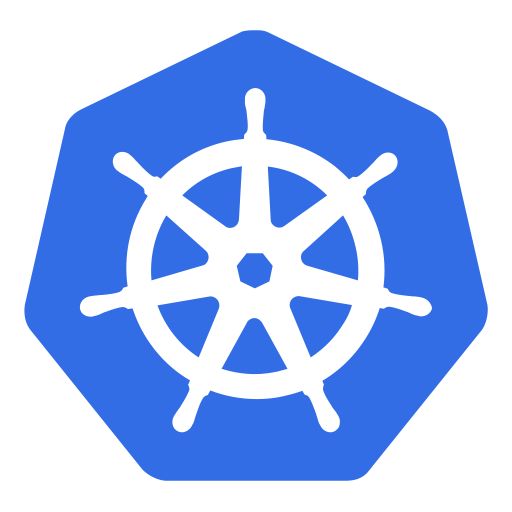Jekyll - Continuous Deployment With Github, CircleCI, Kubernetes, and Google Cloud Platform - Part 2

In Part 1, we integrated CircleCI with Github to trigger a build of our Jekyll website on each push to Github.
In this part, we will use Google Cloud Platform to achieve continuous deployment.
We will do so by adding two jobs to our CircleCI workflow.
The first job is containerisation which was mentioned in Part 1. As well as creating the Docker image, we will also upload it to Google Container Registry (cloud storage for Docker images).
The second job will handle the actual deployment to a production server. This will be done using Kubernetes.
Preliminary steps
-
Create a Gmail account
-
Login to Google Cloud
-
Create a project and enable billing
-
Setup Google Container Registry (step 3 “Enable the API”)
-
Create a Kubernetes cluster in Google Cloud (Kubernetes Engine on the left hand side in Google Cloud Console)
-
Create a Google Cloud service account (“Creating a service account”)
-
Encode the contents of the JSON file downloaded in 7.
cat path/to/json | base64 | tr -d "\n" -
In CircleCI, Settings->Projects. Find the repository of your Jekyll website and click on the wheel icon in the top right hand corner. On the left hand side, Build Settings->Environment Variables, then Add Variable with name:
GCLOUD_SERVICE_KEY, value: the encoded contents from 8. -
Same as 9., add remaining environment variables in CircleCI:
GCLOUD_PROJECT: <my-project>GCLOUD_COMPUTE_ZONE: <my-zone>GCLOUD_K8_CLUSTER: <my-cluster>DOCKER_CONTAINER_REGISTRY: <my-registry>
Optional (recommended) steps
To interact with the Kubernetes API on your local computer:
-
Check the Kubernetes command line tool is installed with
kubectl version. If not, trygcloud components install kubectl, following any prompts -
gcloud auth login -
Point
kubectlto the cluster created in 6.gcloud container clusters get-credentials <my-cluster>
Add job - containerisation
Firstly, we have to modify our original build job so that the contents of _site are
persisted and can be used by the next job.
version: 2
jobs:
build:
docker:
- image: jekyll/jekyll:3.5.0
working_directory: /srv/jekyll
steps:
- checkout
- run:
command: ./build-jekyll.sh
environment:
JEKYLL_ENV: production
# additional step
- persist_to_workspace:
root: /srv/jekyll
paths:
- _site
Now that the contents of _site are persisted, we can create a new job in the workflow:
[bearing in mind that to push to Google Container Registry, we need to install and authenticate the Google Cloud SDK first]
# add job `containerise`
containerise:
docker:
- image: google/cloud-sdk:latest
steps:
- setup_remote_docker
- checkout
- attach_workspace:
at: .
- run:
command: ./authenticate-gcloud.sh
- run:
command: docker build --tag "DOCKER_CONTAINER_REGISTRY"/"GCLOUD_PROJECT"/"<my-image>":"<my-image-version>" .
- run:
name: Push docker image
command: docker push "DOCKER_CONTAINER_REGISTRY"/"GCLOUD_PROJECT"/"<my-image>":"<my-image-version>"
workflows:
version: 2
build-containerise:
jobs:
- build
# add new job `containerise` to workflow
- containerise:
requires:
- build
filters:
branches:
only: master
with authenticate-gcloud.sh in the project root
#!/usr/bin/env bash
set -e
GCLOUD_SERVICE_KEY_PATH="$HOME"/gcloud-service-key.json
echo "$GCLOUD_SERVICE_KEY" | base64 --decode --ignore-garbage > "$GCLOUD_SERVICE_KEY_PATH"
gcloud auth activate-service-account --key-file="$GCLOUD_SERVICE_KEY_PATH"
gcloud config set project "$GCLOUD_PROJECT"
gcloud config set compute/zone "$GCLOUD_COMPUTE_ZONE"
gcloud auth configure-docker
As we want to expose our Jekyll site to the internet, we add EXPOSE 80 to our Dockerfile.
Add job - Kubernetes deployment
Deployment is done via kubectl which is part of the Google Cloud SDK.
Thus the changes to
our CircleCI config.yml are quite similar to those above:
# add job `deploy-production`
deploy-production:
docker:
- image: google/cloud-sdk:latest
steps:
- checkout
- run:
commmand: ./authenticate-gcloud.sh
- run:
command: ./deploy.sh
workflows:
version: 2
build-containerise-deploy-production:
jobs:
- build
- containerise:
requires:
- build
filters:
branches:
only: master
# add new job `deploy-production` to workflow
- deploy-production:
requires:
- containerise
filters:
branches:
only: master
However, as we will be interacting with the Kubernetes cluster, we add
gcloud container clusters get-credentials "<my-cluster>"
to authenticate-gcloud.sh.
The actual deployment happens in deploy.sh
#!/usr/bin/env bash
set -xe
kubectl apply -f deployment.yml
kubectl apply -f service.yml
Firstly, a Kubernetes deployment object is created as per deployment.yml
apiVersion: apps/v1beta2
kind: Deployment
metadata:
name: my-deployment
spec: # specification of desired behaviour of deployment
selector: # label selector for pods; must match pod template's labels
matchLabels:
app: my-app
template: # pod definition
metadata:
labels:
app: my-app
spec: # specification of desired behaviour of pod
containers: # containers in pod
- name: my-jekyll-nginx-container
image: <my-registry>/<my-project>/<my-image>:<my-image-version>
imagePullPolicy: Always
ports:
- containerPort: 80 # as per `EXPOSE 80` in Dockerfile
This however only makes our Jekyll site available within the Kubernetes cluster.
We want to make it also available externally at a static IP address.
Create an external static IP address in Google Cloud; in the console on the left hand side NETWORKING->VPC network->External IP addresses->RESERVE STATIC ADDRESS. Make a note of this IP address.
Secondly, create a Kubernetes service object as per service.yml
apiVersion: v1
kind: Service
metadata:
name: my-service
spec: # defines behaviour of service
selector: # route service traffic to pod(s) with label keys and values matching this selector
app: my-app # as per label for pod above
type: LoadBalancer # determines how service is exposed
loadBalancerIP: <my-static-ip> # only applies to `type: LoadBalancer`; supported by Google Cloud
ports: # ports exposed by service
- port: 8080 # exposed port
targetPort: 80 # number or name of port to access on pod(s) targeted by service; matches `containerPort: 80` in deployment.yml
Before pushing these changes to Github, you can check the syntax of your Kubernetes YAML files:
kubectl apply --validate=true --dry-run=true --filename=<my-kubernetes-file>
If all goes well and your jobs build successfully in CircleCI, you should be able
to view your site at <my-static-ip>:8080.
NB: This might take a few moments, you can check it is ready with kubectl get services
(assuming you completed the optional steps).